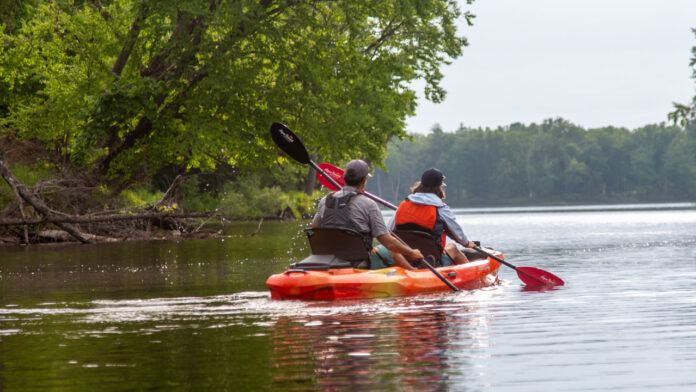Tandem kayaks (two-person kayaks) are stable, fast, and a great way to share an experience on the water with friends and family. But there are a couple of tips for tandem kayaking that will go a long way toward making your trip as smooth as possible.
There are a lot of advantages to using tandem kayaks. They are wide and, therefore, stable. Tandem kayaks can move fast because you have two people driving them along. But you can also power tandem kayaks with just one person. So you don't need to paddle all the time. This is great for people who tire easily, are lazy, or prefer relaxing on the water.
So, here are 3 tandem kayak tips to make the most out of your tandem kayaking experience.
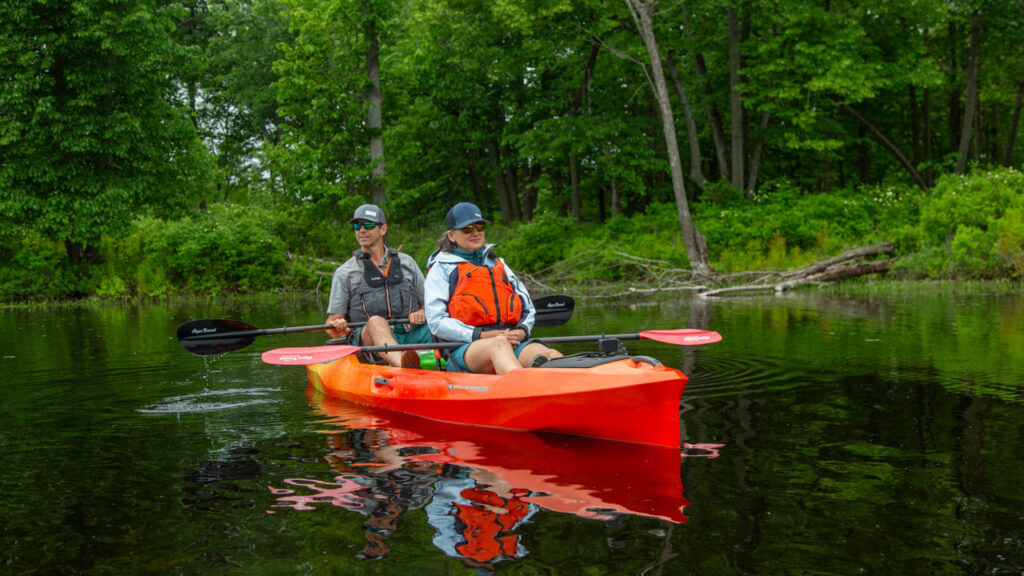
Tandem Kayak Tip #1
Tandem kayaks have often been called divorce boats. That is because paddling adventures in a tandem kayak can become heated debates on the water. But that only happens when people go for a paddle without appreciating why the other person is on the water. When you understand what both paddlers hope to get from an experience on the water, you can adjust the paddling trip plans to accommodate that.
For example, when I recently went on a trip with my wife, we planned what we wanted out of the trip. I like pushing myself to my limits while my wife prefers relaxing on the water. So if we had planned a long trip, she would’ve become overly tired, maybe a little cranky, and neither of us would enjoy it. Instead, I created a paddling trip that we would both enjoy and altered my expectations. We ended up having a wonderful experience.
Tandem kayaks do not need to be divorce boats. You can have an incredible experience with the people you love, on the water, in a tandem kayak. You just need to have the right expectations.
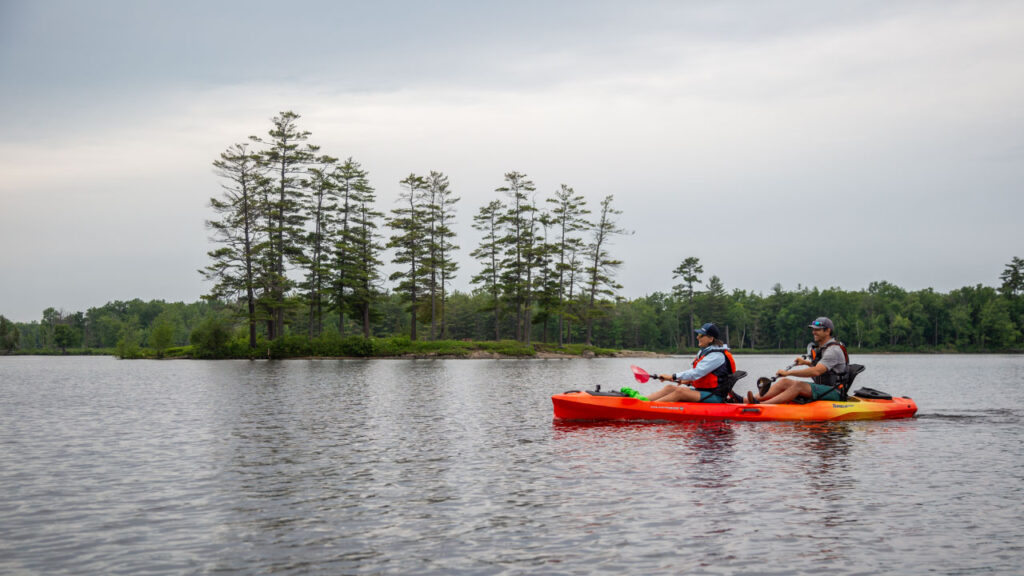
Tip #2: Stronger Paddler Should Be in the Stern
There are a couple of reasons why the stronger or more active paddler should sit in the stern. If the person in the bow stops paddling, the person at the back can continue to paddle and keep control of the kayak. You can keep making good headway with only the person in the stern kayaking. On the other hand, if the person in the stern stops paddling, the person paddling in the bow will have more difficulty controlling the kayak. So the stronger and more active paddler should always be in the stern of the boat.
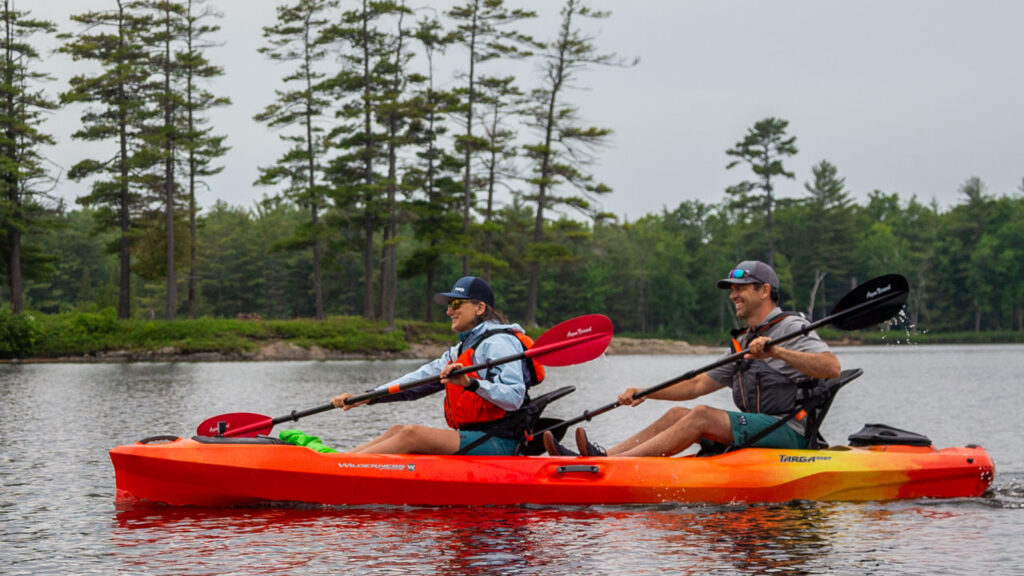
Tip #3. Paddle in Unison on Same Side
Paddling in unison looks prettier when you are out on the water. But more importantly, you are less likely to clash paddles when you paddle in time with each other. Ultimately this will make paddling in a tandem kayak far less frustrating because you can take a clean and full stroke each time. By paddling in unison you will have a less frustrating and more efficient trip.
When paddling in unison, it is important to note that the person in the bow of the kayak sets the pace. The stern paddler then matches the bow paddler's pace. Sometimes your natural stroke pace might be different from each other. To deal with this the stern paddler can always communicate and ask the bow paddler to adjust their pace.
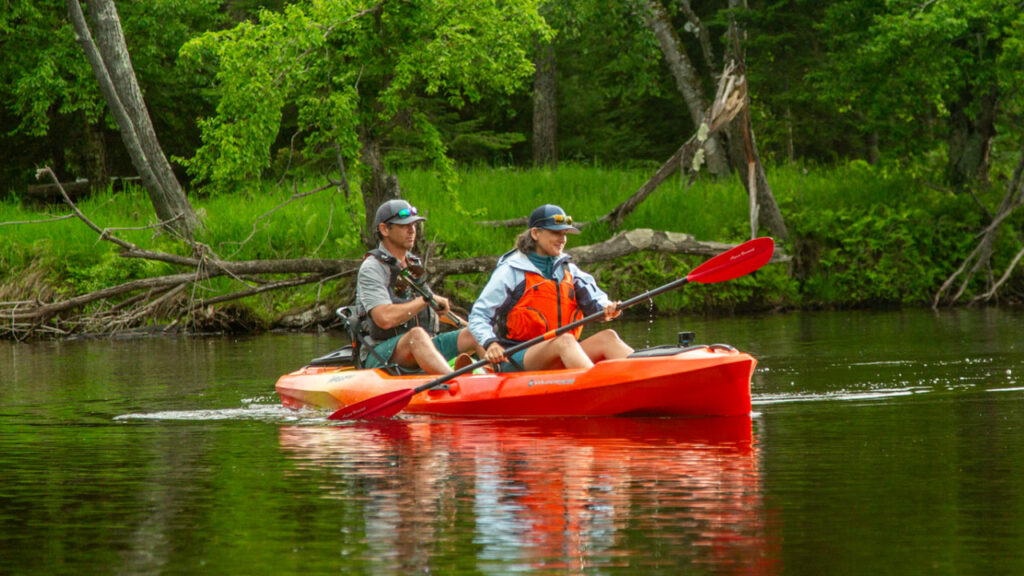
Tip #4 Use Opposite Sweep Stokes to Turn
The most efficient way to turn a tandem kayak is to use opposite sweep strokes on opposite sides. To do this the bow paddler does a forward sweep stroke on one side of the kayak while the stern paddler does a reverse sweep stroke on the other side. This turns the kayak very effectively.
What is a sweep stroke? Well, that is a stroke where you hold the paddle low and sweep the paddle out in a wide arc. You are not propelling the kayak forward in this stroke, you are turning it as much as possible.
Using these tips I enjoyed my last tandem kayaking trip a lot more than I expected. So I will be adding more tandem kayaking to my paddling trips in the future.
If you're interested in this specific tandem kayak, feel free to read my full Wilderness Systems Targa 130T review as well.

PFDs/Life Jackets: NRS Odyssey PFD (Touring and Rec)
Kayaks: Wilderness Systems Targa 130t
Paddle: Aqua Bound Manta Ray Carbon 2-piece
Shirts and Tops: NRS Guide Short Sleeved Men’s Shirt
Paddling Shorts: NRS Benny Board Shorts
Sunglasses: Wiley X



